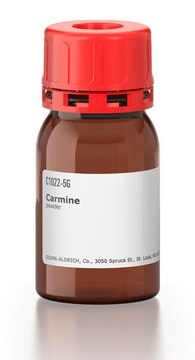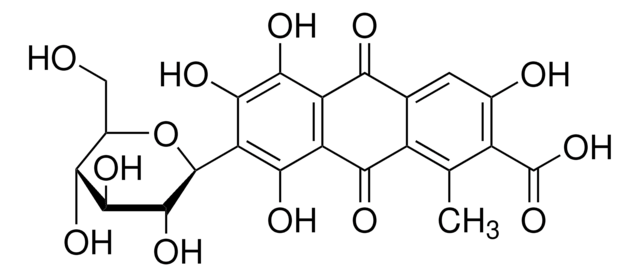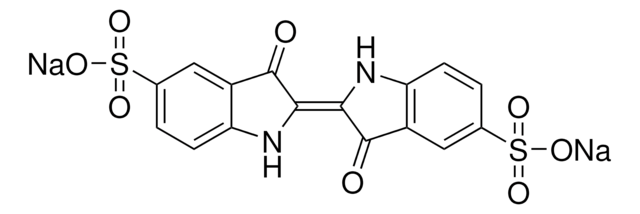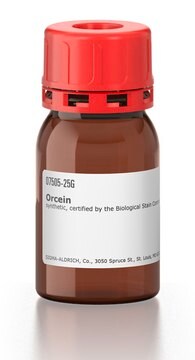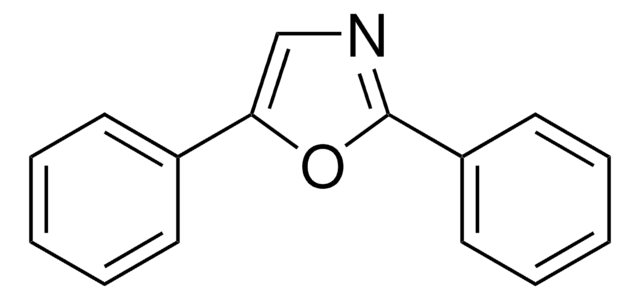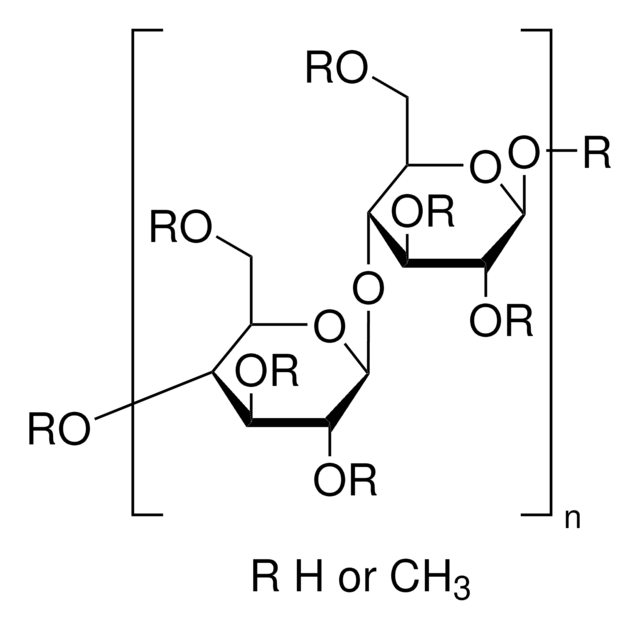C6152
Carmine
Dye content: minimum not established , certified by the Biological Stain Commission, powder
Synonim(y):
Alum lake of carminic acid, Cochineal, Nacarat, Natural Red 4
About This Item
Polecane produkty
Nazwa produktu
Carmine, certified by the BSC, certified by the Biological Stain Commission
klasa czystości
certified by the Biological Stain Commission
Poziom jakości
agency
certified by the BSC
Formularz
powder
skład
Dye content: minimum has not been established
kolor
red
rozpuszczalność
1 mg/mL, red (2 N NH4OH)
Zastosowanie
diagnostic assay manufacturing
hematology
histology
temp. przechowywania
room temp
ciąg SMILES
O1C(C(C(C(C1c2c(c3c(c(c2O)O)C(=O)c4c(c(c(c(c4)O)C(=O)O)C)C3=O)O)O)O)O)CO
InChI
1S/C22H20O13/c1-4-8-5(2-6(24)9(4)22(33)34)13(25)10-11(15(8)27)16(28)12(18(30)17(10)29)21-20(32)19(31)14(26)7(3-23)35-21/h2,7,14,19-21,23-24,26,28-32H,3H2,1H3,(H,33,34)
Klucz InChI
DGQLVPJVXFOQEV-UHFFFAOYSA-N
Szukasz podobnych produktów? Odwiedź Przewodnik dotyczący porównywania produktów
Opis ogólny
Zastosowanie
Przydatność
Kod klasy składowania
11 - Combustible Solids
Klasa zagrożenia wodnego (WGK)
WGK 1
Temperatura zapłonu (°F)
Not applicable
Temperatura zapłonu (°C)
Not applicable
Środki ochrony indywidualnej
Eyeshields, Gloves, type N95 (US)
Wybierz jedną z najnowszych wersji:
Masz już ten produkt?
Dokumenty związane z niedawno zakupionymi produktami zostały zamieszczone w Bibliotece dokumentów.
Klienci oglądali również te produkty
Nasz zespół naukowców ma doświadczenie we wszystkich obszarach badań, w tym w naukach przyrodniczych, materiałoznawstwie, syntezie chemicznej, chromatografii, analityce i wielu innych dziedzinach.
Skontaktuj się z zespołem ds. pomocy technicznej